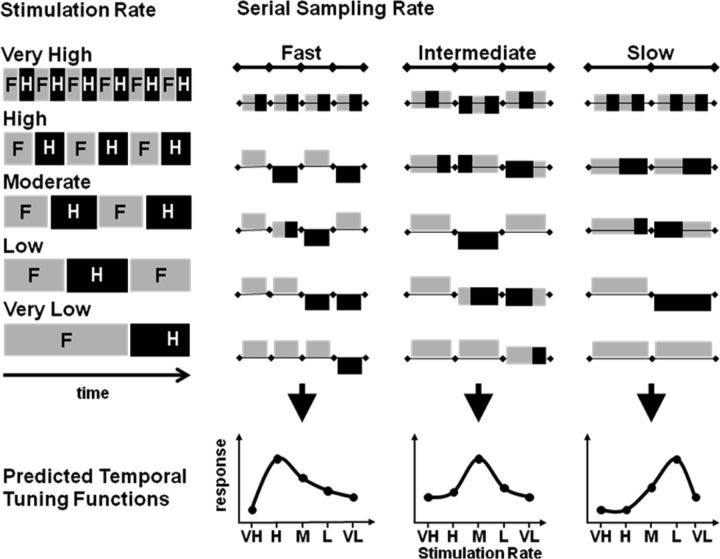Figure 1.
Schematic illustrating predicted determinants of cortical temporal tuning. These predictions are grounded in a framework assuming that cortical regions differ intrinsically in the width of the temporal window over which they process information, that the processing of a continuous flow of sensory information involves serial sampling at a rate corresponding to window width, and that responses are phasic (i.e., determined by changes of resampled sensory signals). The left-hand column indicates a periodic input, the alternation of a single face and a single house image (indicated by F and H) at rates ranging from very high (VH) to very low (VL). The second to fourth columns illustrate the sensory content of successive windows of integration for areas differing in their intrinsic sampling rate. The sensory content can correspond entirely to one image if the neural sampling window is at least as short as stimulus duration or contain mixtures of the two frames. Sensory content is graphically indicated by the vertical position of each integration window relative to the horizontal line. We assume that fMRI signal is sensitive to the degree of variation of sensory content occurring over successive windows of integration. The ensuing tuning functions for different cortical areas are indicated at the bottom of the figure.

